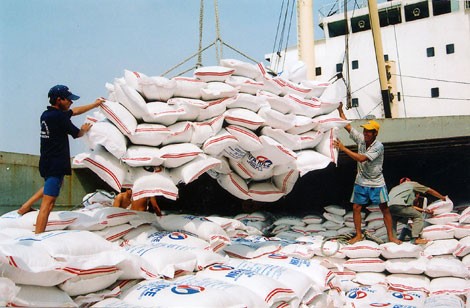Restructuring production focusing on high added value commodities is the orientation of the agricultural sector this year and the long-term vision until 2020.
 |
| Rice production reached 42 million tons last year |
The agricultural sector had an impressive record last year. Rice production reached a record total of 42 million tons, and rice exports 7 million tons. Four commodities saw export turnovers of 3 billion USD or more, generating an export surplus of 9.2 billion USD. However, although export volume increased remarkably, the added value of exports fell. Agricultural growth has relied on increasing acreage, crops, and inputs such as labor, investment, and materials. Vietnam’s growth models have resulted in large volumes at low prices and low value and inefficient land use.
Cao Duc Phat, Minister of Agriculture and Rural Development, says Vietnam needs to restructure the sector and create a better development plan. This year, the sector will concentrate on the development of the plantation, husbandry, and fishery industries while encouraging household economy, and the restructuring of state-owned enterprises. “We have to boost production, while raising farmers’ incomes at a faster rate. The sector should focus more on fishery and husbandry production, and particularly on selected plants and animals. Scientific and technological knowledge and international agricultural practices should be applied in production to gain higher quality products at better prices.” says Minister Phat.
The agricultural sector aims to grow 20% in the next 10 years. It wants to mechanize rice production in combination with scientific advancements to maintain sustainable production, reduce costs, and improve quality to ensure national food security and Vietnam’s ranking among the world’s leading rice exporters. Added value of rice exports should reach 15% in 2015, and 20 to 25% in 2020. International organizations predict that the prices of agricultural products will continue to surge in the next 30 to 50 years due to high demand.
The husbandry sector will gradually shift from small, scattered production to closed farm production appropriate to local financial capacity, management, and environment. Hoang Kim Giao, Director of the Husbandry Department, elaborates: “There are approximately 7.5 million households involved in raising animals. We have to place the farmers in production and product management chains. The enterprises will be in charge of coordinators.”
The agricultural sector will also encourage the aquaculture industry to expand production using clean technology and international standards to ensure food hygiene and safety.
Facing a potential food crisis and a changing growth orientation, agriculture is becoming a lucrative field for investment. Vietnam has the potential to create higher profits if the sector rapidly reforms its methods and offers investors more opportunities. Dang Kim Son, Head of the Institute of Strategy and Policy for Agriculture and Rural Development says: “There will be a lot of challenges and opportunities ahead. I believe that Vietnamese farmers will enthusiastically and creatively cope with market demand. They will be the first people to grasp opportunities and turn them into the desired effect.”
The restructuring plan is expected to generate a momentum for the sector to gain a breakthrough this year, while creating more opportunities for farmers to earn higher income.
Anh Huyen